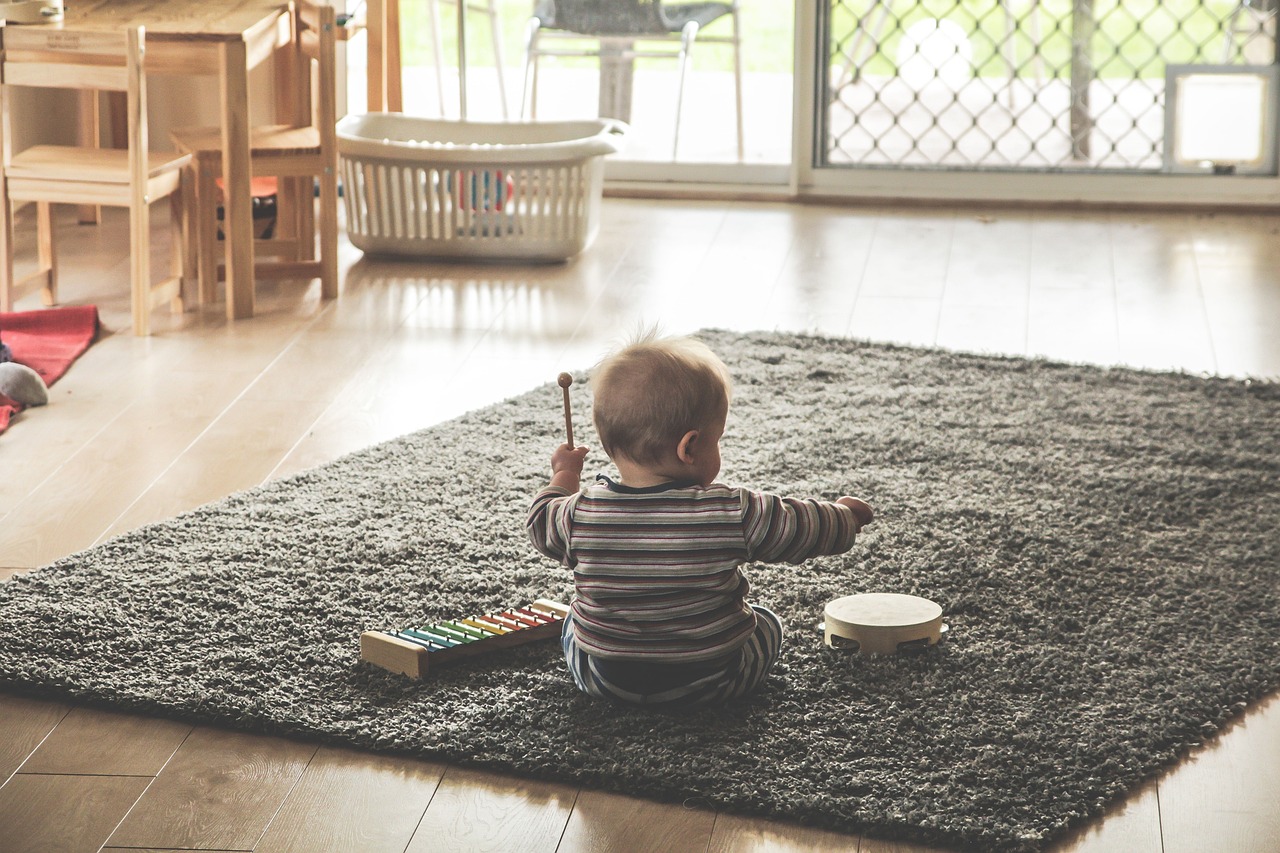How To Get a Kid To Stop Crying Over Everything
Dealing with a stop crying toddler can be incredibly challenging for parents. From ending toddler tantrums to managing toddler emotions, it can feel overwhelming to find effective strategies to reduce crying episodes. If you’re a parent looking for tips on how to soothe a crying child and help them manage frustration, you’ve come to the right place.
In this article, we will explore practical techniques and calming techniques for emotional outbursts that can help you get a kid to stop crying over everything. By understanding the roots of excessive crying in children and implementing therapeutic approaches, you can create a peaceful and nurturing environment to promote emotional maturity in your child.
From identifying emotional triggers and developing coping strategies to instilling emotional intelligence and validation techniques, we will provide you with actionable steps to support your child’s emotional well-being. Additionally, we will discuss the importance of consistent routines and open communication, as well as nurturing independence and preventing overstimulation.
By implementing these strategies, you can help your child reduce crying meltdowns and manage their emotions effectively. Say goodbye to dealing with excessive crying and hello to a more peaceful and harmonious home environment.
Skip To The Following Sections
- Understanding the Roots of Excessive Crying in Children
- Identifying Emotional Triggers and Developing Coping Strategies
- Therapeutic Approaches to Managing Toddler Emotions
- Maintaining Consistent Routines to Reduce Crying Episodes
- Instilling Emotional Intelligence and Validation Techniques
- Implementing Calming Techniques for Emotional Outbursts
- How To Get a Kid to Stop Crying Over Everything
- Facilitating Open Communication to Prevent Crying Meltdowns
- Nurturing Independence to Help Kids Manage Frustration
- Preventing Overstimulation: Strategies for a Peaceful Environment
- Conclusion
- FAQ
- How can I get my child to stop crying over everything?
- Why does my child cry so much?
- Are there therapeutic approaches to help my child manage their emotions?
- How do consistent routines help reduce crying episodes in children?
- How can I instill emotional intelligence in my child and teach validation techniques?
- What are some calming techniques for emotional outbursts and temper tantrums?
- How can I get my child to stop crying and encourage good behavior?
- How can open communication help prevent crying meltdowns?
- How can I nurture independence in my child to help them manage frustration?
- What strategies can I use to prevent overstimulation in my child?
- Source Links
Key Takeaways:
- Identify emotional triggers and develop coping strategies.
- Instill emotional intelligence and validation techniques in your child.
- Implement calming techniques for emotional outbursts.
- Use consistent routines to reduce crying episodes.
- Facilitate open communication and prevent crying meltdowns.

Understanding the Roots of Excessive Crying in Children
Excessive crying in children can be distressing for both parents and the child. It is essential to have a deep understanding of the underlying causes to effectively address this issue. Excessive crying in children can be attributed to various factors, including emotional regulation difficulties, anxiety, and depression.
Emotional regulation refers to a child’s ability to manage and express their emotions appropriately. Some children may struggle with regulating their emotions, leading to excessive crying episodes. It is crucial to provide children with the necessary tools and techniques to develop emotional regulation skills.
Anxiety and depression can also contribute to excessive crying in children. Children may experience overwhelming feelings of fear, worry, or sadness, leading to increased crying. Identifying and addressing any underlying anxiety or depression is vital in helping children manage their emotions and reduce excessive crying.
Identifying Emotional Triggers and Developing Coping Strategies
As parents, it’s essential to understand the emotional triggers that lead to excessive crying in children. By identifying these triggers, you can help your child navigate and manage their emotions effectively. Additionally, teaching them coping skills empowers them to better handle challenging situations without resorting to crying.
Here are some helpful strategies to identify and address emotional triggers in your child:
- Observe patterns: Pay attention to recurring situations or events that consistently trigger emotional outbursts in your child. These triggers could be anything from transitions to specific activities or environments.
- Communicate openly: Encourage your child to express their feelings and thoughts. Create a safe space for them to share what bothers them or makes them upset. Active listening and validating their emotions will help them feel understood and supported.
- Recognize physical cues: Children often exhibit physical signs that indicate emotional distress. It could be a flushed face, clenched fists, or changes in breathing. Being aware of these cues can help you intervene before the situation escalates.
- Encourage self-awareness: Teach your child to identify and label their emotions. Help them understand that it is normal to experience a range of feelings and provide them with a vocabulary to express themselves effectively.
- Introduce relaxation techniques: Teach your child age-appropriate relaxation techniques, such as deep breathing exercises or progressive muscle relaxation, to help them calm down during moments of distress.
- Implement problem-solving strategies: Teach your child problem-solving skills to handle challenging situations. Encourage them to brainstorm solutions, evaluate pros and cons, and choose the best course of action.
By actively supporting your child’s emotional well-being, you can cultivate their coping skills and equip them with essential tools to manage their emotions more effectively.
Therapeutic Approaches to Managing Toddler Emotions
When it comes to helping children manage their emotions, therapeutic approaches can provide valuable support and guidance. These approaches are designed to help children develop healthy emotional regulation skills and effectively cope with their feelings. In this section, we will explore different therapeutic strategies that can be beneficial for children.
Reframing Therapy for Skeptical Parents
Some parents may have reservations about therapy for their children, viewing it as a last resort or a sign of weakness. However, reframing therapy as a valuable tool for growth and emotional well-being can help overcome these reservations. Parents can be encouraged to see therapy as an opportunity for their child to learn new skills, develop self-awareness, and build resilience. Education and open communication with parents about the benefits of therapy can help alleviate any skepticism they may have.
Benefits of Practicing New Skills with a Professional Coach
Working with a professional coach or therapist can offer children a safe and supportive environment to practice and refine their emotional management skills. These professionals have specialized training and expertise in helping children navigate their emotions effectively. Through various techniques such as play therapy, cognitive-behavioral therapy, or expressive arts therapy, children can learn healthy coping mechanisms and build emotional resilience. Regular sessions with a professional coach can provide children with the necessary guidance and support to manage their emotions in a constructive manner.
By introducing therapeutic approaches into their children’s lives, parents can help them develop a strong foundation for emotional well-being. These approaches can empower children with the necessary skills to navigate their emotions and lead a more balanced and fulfilling life.
Maintaining Consistent Routines to Reduce Crying Episodes
Consistent routines play a crucial role in reducing crying episodes in children. When children have predictable schedules, they feel more secure and have a better understanding of what to expect. This helps them develop a sense of control over their environment and emotions, leading to a reduction in meltdowns and crying outbursts.
Here are some benefits of implementing consistent routines for emotional regulation:
- Promotes a sense of security: Knowing what to expect and when helps children feel safe and secure. This stability can help minimize anxiety and emotional distress, reducing the likelihood of crying episodes.
- Encourages self-regulation: When children have consistent routines, they learn to anticipate and manage their needs and emotions. This promotes self-regulation skills, allowing them to cope better with everyday challenges and minimizing the likelihood of meltdowns.
- Minimizes hangry meltdowns: Establishing regular snack and meal times as part of a consistent routine can prevent hunger-induced meltdowns (“hangry” meltdowns). When children’s nutritional needs are met on a regular schedule, they are less likely to experience extreme hunger and subsequent emotional distress.
- Creates a calm environment: Consistent routines help create a calm and structured environment, which can have a positive impact on emotional well-being. When children know what to expect, they feel more settled and are better equipped to manage their emotions.
By incorporating consistent routines into your child’s daily life, you can greatly reduce crying episodes and create a more harmonious and calm environment for both you and your child.
| Benefits of Consistent Routines |
|---|
| Promotes a sense of security |
| Encourages self-regulation |
| Minimizes hangry meltdowns |
| Creates a calm environment |

Instilling Emotional Intelligence and Validation Techniques
Developing emotional intelligence in children is essential for their overall well-being and success in life. By teaching them the importance of understanding and regulating their emotions, parents can help children navigate through challenging situations and build healthy relationships. In addition, validation techniques play a crucial role in validating a child’s feelings and experiences, fostering empathy and compassion.
Here are some tips on how to instill emotional intelligence and teach validation techniques to children:
- Lead by example: Children learn by observing the behavior of the adults around them. Show empathy, understanding, and emotional regulation in your own actions and interactions.
- Encourage emotional expression: Create a safe and non-judgmental space for children to express their emotions. Encourage them to talk about how they feel and validate their experiences.
- Teach empathy: Help children understand and consider the feelings and perspectives of others. Encourage acts of kindness and compassion towards others.
- Practice active listening: When children share their feelings or experiences, give them your full attention. Show that you value their thoughts and emotions by listening actively and responding empathetically.
- Use validation statements: Validate your child’s emotions by acknowledging and accepting their feelings. For example, say, “I understand that you’re feeling sad right now, and it’s okay to feel that way.”
- Teach problem-solving skills: Help children develop problem-solving skills by guiding them through conflict resolution and decision-making processes. Encourage them to think critically and consider different perspectives.
- Provide emotional support: Be there for your child during difficult times. Offer comfort, reassurance, and guidance, letting them know that you are there to support them.
By implementing these strategies, you can foster emotional intelligence and empathy in your child, helping them develop lifelong skills for managing their emotions and building meaningful connections with others.
Implementing Calming Techniques for Emotional Outbursts
When your child experiences emotional outbursts or temper tantrums, it can be challenging to know how to respond and help them calm down. Thankfully, there are various calming techniques that you can implement to support your child during these difficult moments. By incorporating relaxation techniques for kids and managing temper tantrums effectively, you can create a peaceful environment and promote emotional regulation. Here are some strategies to consider:
- Deep Breathing: Encourage your child to take slow, deep breaths in through their nose and out through their mouth. This simple technique can help them relax and regain control of their emotions.
- Progressive Muscle Relaxation: Teach your child to tense and then relax different muscle groups in their body. This technique promotes relaxation and can help alleviate tension and stress.
- Guided Imagery: Use storytelling to guide your child’s imagination to a calm and peaceful place. Encourage them to visualize a serene setting, such as a beach or a meadow, and help them describe the details to enhance the experience.
- Time-Outs: When emotions are running high, it can be helpful for both you and your child to take a break. Find a designated quiet space where your child can retreat to and engage in a calming activity, such as reading a book or drawing.
- Physical Activity: Engaging in physical exercise can release pent-up energy and provide an outlet for emotional intensity. Encourage your child to engage in activities such as dancing, jumping on a trampoline, or going for a walk.
- Visual Cues: Create visual cues that remind your child of their calming techniques. This can be a poster or a small card with illustrations representing deep breathing or relaxing activities. Place these cues in visible locations to serve as gentle reminders.
By implementing these calming techniques for emotional outbursts, you can support your child in managing their emotions and reduce the frequency and intensity of temper tantrums. Remember to remain patient and empathetic during these challenging moments, providing a safe and nurturing environment for your child to express and regulate their feelings.
| Calming Techniques | Description |
|---|---|
| Deep Breathing | Encourages slow, deep breaths to promote relaxation and emotional control. |
| Progressive Muscle Relaxation | Involves tensing and relaxing different muscle groups to alleviate tension and stress. |
| Guided Imagery | Uses storytelling to guide the child’s imagination to a calm and peaceful place. |
| Time-Outs | Provides a designated quiet space for the child to engage in calming activities. |
| Physical Activity | Encourages the child to engage in exercise to release pent-up energy and emotions. |
| Visual Cues | Creates visual reminders of calming techniques to help the child remember and implement them. |
How To Get a Kid to Stop Crying Over Everything
In this section, we will discuss specific strategies to get a kid to stop crying over everything. By redirecting their attention from crying and using positive reinforcement for good behavior, we can help them develop healthier emotional responses.
Redirecting Attention from Crying
When a child starts crying over everything, it’s essential to redirect their attention to something positive or engaging. Here are a few techniques that can be helpful:
- Engage them in a fun activity or game that they enjoy.
- Offer them a toy or object that can capture their attention.
- Provide a change of scenery by taking them outside or moving to a different room.
- Encourage them to express their emotions through drawing or storytelling.
By redirecting their focus, you can help alleviate the crying and create a more positive environment for both you and your child.
Positive Reinforcement for Good Behavior
Positive reinforcement is an effective approach to encourage good behavior and reduce crying episodes. Here are some strategies to implement:
- Praise your child when they exhibit calm behavior or express their emotions in a non-crying manner.
- Use rewards such as stickers, small treats, or extra playtime for positive behavior.
- Set achievable goals with your child and celebrate their milestones together.
- Create a reward chart or system that allows them to track their progress and earn rewards for displaying desired behavior.
By using positive reinforcement, you not only motivate your child to stop crying but also foster their emotional growth and development.
| Redirecting Attention from Crying | Positive Reinforcement for Good Behavior |
|---|---|
| Engage in a fun activity or game | Praise and celebrate calm behavior |
| Offer a captivating toy or object | Use rewards and incentives |
| Change the scenery outside or to another room | Set achievable goals and milestones |
| Encourage expression through drawing or storytelling | Create a reward chart or system |
Implementing these redirecting and positive reinforcement strategies can greatly contribute to stopping a kid from crying over everything. It may take time and consistency, but by providing alternative outlets for their emotions and reinforcing positive behaviors, you can help them cultivate healthier emotional responses and overall well-being.

Facilitating Open Communication to Prevent Crying Meltdowns
Open communication with children is a vital tool for preventing crying meltdowns. By encouraging children to express their feelings in non-crying forms and creating safe spaces for them to share their concerns, parents can foster a sense of trust and emotional well-being.
Here are some strategies to facilitate open communication with your child and prevent crying meltdowns:
- Active Listening: Dedicate quality time to engage in focused conversations with your child. Show genuine interest by maintaining eye contact, nodding, and asking open-ended questions. This demonstrates that you value their thoughts and emotions.
- Validate Their Feelings: Let your child know that their feelings are valid and important. Acknowledge and empathize with their experiences, reassuring them that it’s okay to express their emotions without resorting to crying.
- Create a Safe Space: Designate a specific area in your home where your child can retreat when they need to express themselves. This could be a cozy corner with pillows, blankets, and art supplies. Encourage them to use this space as a creative outlet for their emotions.
- Encourage Verbal Expression: Help your child develop their communication skills by encouraging them to express their emotions verbally. Teach them age-appropriate words to describe their feelings, and offer praise and validation when they successfully communicate their emotions without crying.
- Lead by Example: Show your child that open communication is valued in your family by openly expressing your own feelings and thoughts. This encourages them to do the same and normalizes open expression.
- Practice Active Problem-Solving: Engage your child in problem-solving activities where they can express their concerns and find solutions. This empowers them to take ownership of their emotions and develop effective coping strategies.
- Be Patient and Understanding: Remember that open communication may take time for children to develop. Be patient and understanding as they navigate their emotional journey, offering support and guidance along the way.
By implementing these strategies, you can create an environment that fosters open communication, prevents crying meltdowns, and promotes healthy emotional expression in your child.
| Strategy | Benefits |
|---|---|
| Active Listening | Builds trust and strengthens the parent-child bond |
| Validate Their Feelings | Helps children feel understood and accepted |
| Create a Safe Space | Provides a designated area for emotional expression |
| Encourage Verbal Expression | Develops communication skills and emotional intelligence |
| Lead by Example | Normalizes open expression in the family dynamic |
| Practice Active Problem-Solving | Empowers children to find solutions and cope effectively |
| Be Patient and Understanding | Nurtures a supportive and compassionate environment |
Nurturing Independence to Help Kids Manage Frustration
Nurturing independence in children is crucial for their emotional development and ability to manage frustration effectively. By encouraging self-reliance and teaching frustration tolerance, parents can empower their children to navigate challenging situations with confidence.
Here are some strategies for promoting independence and fostering frustration tolerance in kids:
- Assign age-appropriate responsibilities: Giving children tasks and responsibilities helps them develop a sense of competence and self-reliance. Start with small tasks like setting the table or tidying their room, gradually increasing the level of responsibility as they grow.
- Encourage problem-solving: Instead of immediately rescuing your child when they encounter a problem, encourage them to find solutions on their own. Offer guidance and support, but allow them to think critically and come up with their own solutions. This helps foster independence and builds confidence in their problem-solving abilities.
- Promote decision-making: Allow your child to make decisions within appropriate boundaries. Let them choose their outfit for the day, decide what to have for lunch, or select an activity for the weekend. This allows them to develop decision-making skills and feel a sense of ownership over their choices.
- Teach emotional regulation techniques: Help your child identify and express their feelings in healthy ways. Teach them deep breathing exercises, mindfulness techniques, or engaging in physical activities like dancing or drawing. These techniques can help them regulate their emotions and reduce frustration levels.
- Create a supportive environment: Foster an environment that encourages independence and acknowledges the importance of managing frustration. Celebrate your child’s efforts and provide positive reinforcement when they handle challenging situations calmly and effectively.
By nurturing independence and teaching frustration tolerance, parents can equip their children with essential skills to navigate life’s challenges confidently. This will help them develop resilience, problem-solving abilities, and emotional maturity.
| Benefits of Nurturing Independence | Strategies for Teaching Frustration Tolerance |
|---|---|
|
|

Preventing Overstimulation: Strategies for a Peaceful Environment
Excessive stimulation can often overwhelm and contribute to crying episodes in children. Creating a calm and peaceful environment can help reduce sensory overload and promote emotional well-being. Here are some strategies to prevent overstimulation in children:
- Limit screen time: Excessive exposure to electronic devices can overstimulate children’s senses. Set and enforce age-appropriate limits on screen time to create a balanced environment.
- Create a soothing bedroom: Design your child’s bedroom to be a tranquil space where they can relax and unwind. Use soft colors, comfortable bedding, and dim lighting to foster a sense of calm.
- Organize and declutter: Clearing out clutter can help reduce visual and sensory distractions. Keep toys and belongings organized to create a serene and peaceful atmosphere.
- Establish a quiet time: Incorporate regular periods of quiet and calm into your child’s daily routine. Encourage activities such as reading, drawing, or listening to soothing music to promote relaxation.
- Avoid overcrowded environments: Large crowds and noisy places can overwhelm a child’s senses. Choose quieter locations or plan outings during less busy times to minimize sensory overload.
- Use calming techniques: Teach your child calming techniques such as deep breathing or mindfulness exercises. These techniques can help them self-regulate and manage their emotions when feeling overwhelmed.
- Create a sensory-friendly space: For children who are particularly sensitive to certain sensory stimuli, consider creating a designated area with sensory-friendly toys and materials. This space can provide a safe haven where they can retreat and feel comfortable.
By implementing these strategies and fostering a peaceful environment, you can help prevent overstimulation in children and provide them with the calmness they need to thrive.

Conclusion
Helping kids stop crying and managing their emotions effectively is crucial for their overall well-being and development. By following the tips and strategies outlined in this article, you can support your child’s journey toward emotional maturity.
Promoting emotional intelligence and validating your child’s feelings are essential aspects of fostering healthy emotional development. Encourage open communication and create safe spaces for your child to express themselves non-cryingly. This will allow them to develop the necessary skills to regulate their emotions.
Consistency and communication play vital roles in helping kids manage their emotions. Maintaining consistent routines provides a sense of stability and predictability, reducing crying episodes. Additionally, nurturing independence and teaching frustration tolerance empower children to navigate their emotions with resilience.
Remember, the triad of comfort – emotional support, consistent routines, and effective communication – forms the foundation for helping kids stop crying over everything. By implementing these strategies and providing a nurturing environment, you can guide your child toward emotional maturity and empower them to manage their emotions successfully.
FAQ
How can I get my child to stop crying over everything?
To help your child stop crying over everything, it’s important to understand the underlying causes of their excessive crying. You can try identifying emotional triggers, teaching them healthy coping skills, and maintaining consistent routines to minimize meltdowns. Additionally, nurturing their emotional intelligence and validating their feelings can aid in emotional regulation.
Why does my child cry so much?
Excessive crying in children can have various causes, including difficulty in regulating emotions, anxiety, or depression. By understanding the roots of their crying, such as emotional triggers, you can develop strategies to address and manage their emotions effectively.
Are there therapeutic approaches to help my child manage their emotions?
Yes, there are therapeutic approaches available to help children manage their emotions. Techniques like reframing therapy can be beneficial for skeptical parents, and practicing new skills with a professional coach can also be helpful in teaching children how to regulate their emotions.
How do consistent routines help reduce crying episodes in children?
Consistent routines play a crucial role in reducing crying episodes in children. Predictable schedules and incorporating snack and rest times can help minimize meltdowns, especially those triggered by hunger or fatigue.
How can I instill emotional intelligence in my child and teach validation techniques?
Instilling emotional intelligence in your child involves teaching them to understand and regulate their emotions. You can also teach validation techniques by acknowledging and validating their feelings without judgment, thereby helping them develop healthier ways of expressing themselves.
What are some calming techniques for emotional outbursts and temper tantrums?
When your child experiences emotional outbursts or temper tantrums, you can use various calming techniques to help them calm down. These techniques include deep breathing exercises, providing a quiet space, offering a comforting object, or engaging in sensory activities like listening to soothing music or using a stress ball.
How can I get my child to stop crying and encourage good behavior?
To get your child to stop crying and encourage good behavior, you can redirect their attention away from crying and focus on positive reinforcement. Praising and rewarding their good behavior can motivate them to continue displaying positive actions.
How can open communication help prevent crying meltdowns?
Open communication with your child is essential in preventing crying meltdowns. Encouraging them to express their feelings in non-crying forms and creating safe spaces for them to share their concerns allows them to communicate their emotions effectively.
How can I nurture independence in my child to help them manage frustration?
Nurturing independence in your child can help them develop the necessary skills to manage frustration effectively. Encouraging them to problem-solve, make choices, and learn from their mistakes promotes self-reliance and increases their frustration tolerance.
What strategies can I use to prevent overstimulation in my child?
Preventing overstimulation in your child involves creating a peaceful environment and reducing sensory overload. This can be done by providing quiet spaces, limiting screen time, using calming activities, and maintaining a consistent routine.
Source Links
- https://childmind.org/article/my-10-year-old-son-has-become-more-sensitive-over-the-last-two-years-and-now-cries-over-almost-anything-what-can-i-do/
- https://www.chop.edu/pages/crying-over-little-things
- https://caribu.com/2021/10/07/crying-children/









